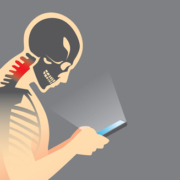4 Health Benefits of Working Upright
Sitting at a desk for extended periods of time is not healthy and can lead to a host of health problems. As more and more studies show the detriments of prolonged sitting, some companies are taking action to protect their employees’ health by installing upright work stations. These desks take the person from a seated position and move them into one where they are leaning. As a result, most of the workers are enjoying several health benefits.
It facilitates healthy postural transitions
Simply put, postural transitions are the body movements made when changing positions. There are large movements like going from sitting to standing, standing to leaning, and standing to sitting, but also small movements like adjusting arm placement or moving a foot.
Ergonomists suggest that a person should be making postural transitions several time an hour. They also recommend that people avoid any static position such as standing, sitting, or leaning for an extended period of time, instead advocating a transition or movement every 20 minutes when possible.
Static positioning has been linked to obesity, heart disease, and other health conditions. When the body is positioned in such a way that facilitates healthy movement, the body moves more often and in a more natural way. This is not likely to happen with static positioning, especially prolonged sitting.
It improves spine health
Sitting or standing for long periods of time is not good for the spine. When a person stands or sits without any healthy postural transitions the spine can begin to compact and the discs become hard. This undermines the spines ability to adequately support the body, leading to loss of mobility, decreased flexibility, and pain.
The spine is made up of small bones, vertebrae, which are cushioned by spongy, fluid filled discs. In a healthy spine, the discs are filled with fluid providing a good cushion for the vertebrae as they move and support the body. However, the discs need movement to encourage blood flow so they can continue working as they should. Working upright facilitates those movements, thus decreasing the likelihood of spinal problems.
It discourages painful posture
Standing and sitting for prolonged periods of time can cause pain and certain mobility problems. While they share some pain points, each brings its own problems. A strained neck and stiff, sore shoulders are often associated with sitting and standing, usually due to improper computer monitor placement. Poor leg circulation, tight hips, and lower back pain are also common problems of people who do a lot of standing or sitting on their jobs.
Using an upright workstation moves the body into a more natural, healthier posture that encourages natural, frequent movement. The spine is properly aligned over the hips, the hips are open, and the feet are adequately supported. It promotes posture that is completely contrary to being hunched over a desk – the typical posture for a sitting workstation.
It keeps core muscles engaged
When in a seated position, the core muscles are mostly lax and rarely engaged. Over time, these muscles can actually be trained to become weak, or lazy and not engage as they should. This means that they stop supporting the back and body which leads to poor posture, loss of balance, lack of mobility, decrease in flexibility, and pain.
Working upright encourages micro movements that engage the core. It’s not like crunches at the gym, but more like an ongoing mini-workout that keeps the core muscles toned and supportive. The results are a healthier spine, fewer gastrointestinal problems, better posture, and improved circulation.
Other health benefits of working upright include a decreased risk of certain cancers like colon cancer and breast cancer, improved circulation, better brain function, and a decreased risk of health conditions like diabetes, heart disease, and hypertension. Working upright is the most natural position for the body’s best function and health.
Visit www.ocwc.ca for more helpful health and wellness information and tips! Give us a call at (780)455-2112 to start your wellness journey today.





